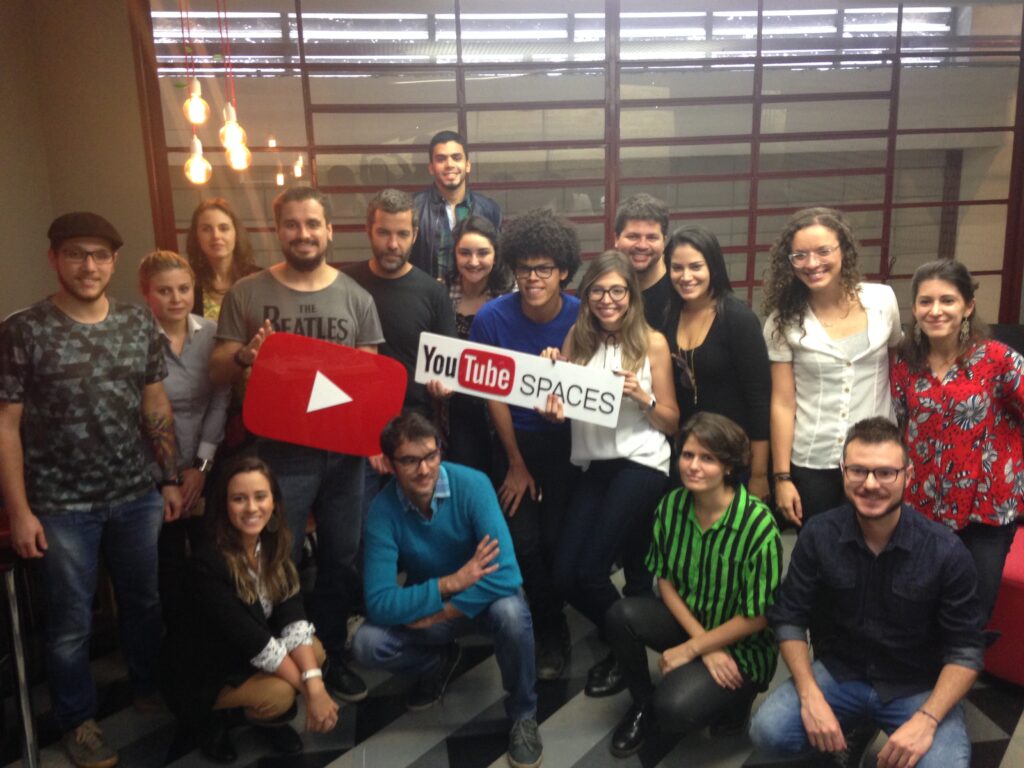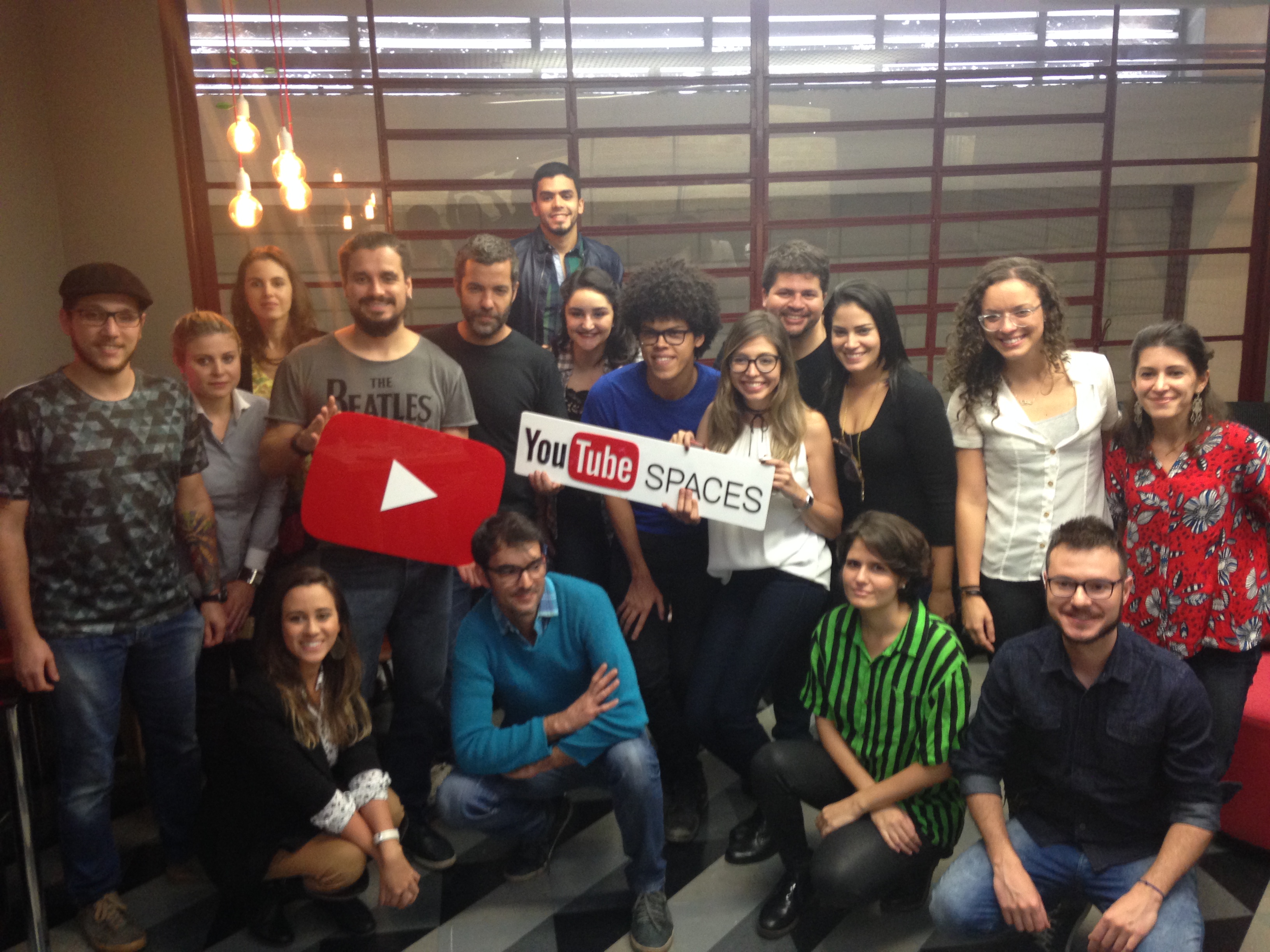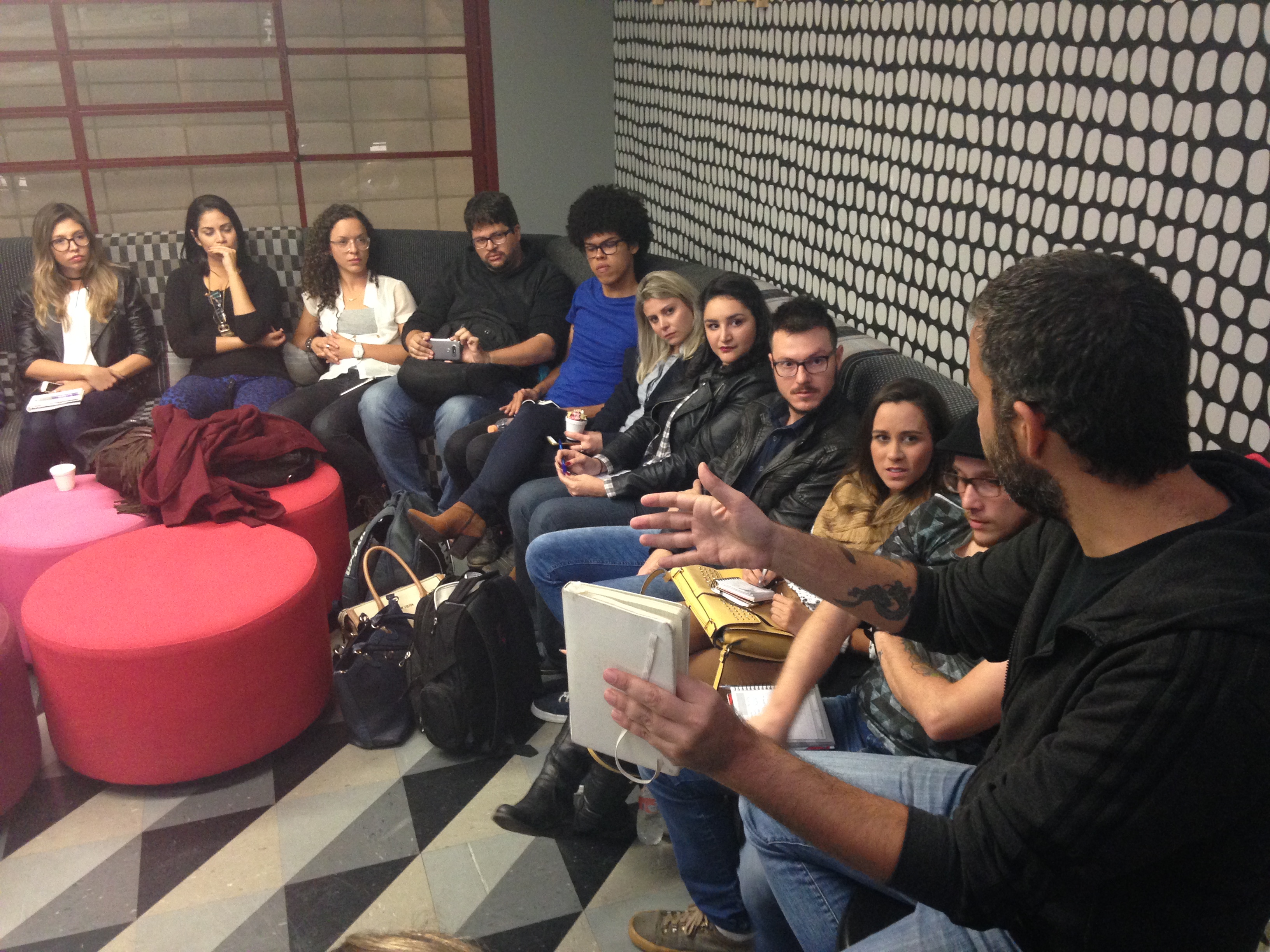
Fifteen students selected from the Massive Open Online Course (MOOC) in Portuguese, “News video production for the internet,” participated in a training event at YouTube Space in São Paulo on Aug. 31. The students attended a special workshop on video production taught by YouTube staff.

The students were chosen based on their final projects produced during the MOOC and received travel grants to São Paulo. At the event, the 15 videos, which were each up to three minutes, were watched and analyzed by the group, YouTube staff and documentary filmmaker João Wainer, the course instructor.
“I think the results of the MOOC were incredible. You can see, with the works, that they completely learned the concept of surpassing the language of a newscast for a more loose and creative method,” said João Wainer, winner of the Esso Award in the category of television journalism and one of the founders and directors of TV Folha. He commented on the project of each student.
More than 6,200 people from Brazil and other countries participated in the MOOC, an online course offered by the National Association of Newspapers (ANJ for its acronym in Portuguese) and the Knight Center for Journalism in the Americas at the University of Texas at Austin, with support from Google. The course ran from June 6 to July 3 and broke the record of students for Portuguese-language MOOCs at the Knight Center.
Videos by students Ana Claudia Müller, 28, and Paola Severo, 24, were selected. They work at Portal Gaz, from the Gazeta group in Santa Cruz, Rio Grande so Sul. The journalists say the MOOC helped change the video production culture in the newsroom. They said even the director participated in the course and encouraged employees to do the same.
“It’s a 70-year-old newspaper in a conservative city, so it was difficult to do more creative videos. They want people to only publish videos of accidents, of quantity, but not quality,” Müller said. The journalist added that they still make these types of videos in the newsroom, but after the course, there is more openness to new formats. “This internal change is a process,” she said. Severo agrees with the advances. “We now have carte blanche to try other types of videos,” she said.

Wainer added that the current crisis of journalism can also be an opportunity to innovate and create new languages. “It is a crisis of the business model, but the content remains relevant. In this context, the reinvention of the journalist is not only a recipe for success, it is a matter of survival,” he said.
During the afternoon, students participated in a workshop with the technical coordinator of YouTube Space, Wallison Felicio, who explained audio capture techniques, camera positioning, scenes, etc. Then, YouTube Space consultant Clayton Galvão gave tips on how to open a video channel. In addition, he explained ways to maintain a positive relationship with the audience, to make good titles, retain the audience and monetize the channel.
At the end of the day, the top three among the 15 videos were selected and their authors received GoPro cameras as prizes. Ramon Luz, 24, was third. A resident of Linhares (ES), he said the MOOC represented a new phase in his career. “I had been repressing a willingness to work with audiovisual and rediscovered that passion. Winning this award only increased my certainty that I should invest in it,” he said.
Journalist Kelly Veronez, 29, who lives in Erechim (RS), was second, and photojournalist Leo Fontes, 41, took first place. A photographer for newspaper O Tempo in Belo Horizonte, Fontes said that the course taught important tools and formed a network of journalists interested in building new narratives.